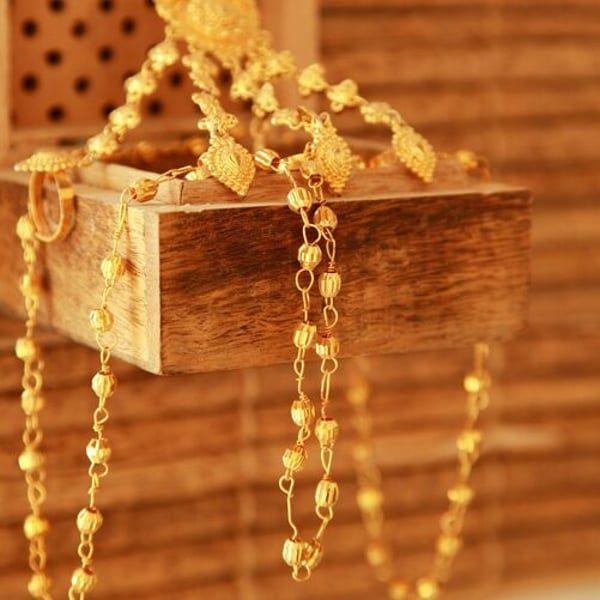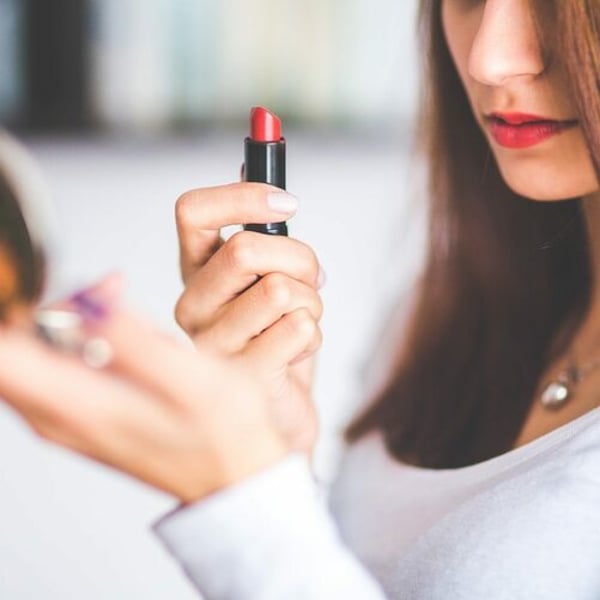Sponsored article
Have you ever bought a gold necklace and now wonder if it's authentic? In an industry dominated by counterfeit gold ornaments, testing your gold to confirm its originality has never been more crucial. Whether you've invested in an expensive antique that's been passed down through generations or a contemporary piece of jewelry to achieve a sleek and chic look, testing your gold necklace can save you what could possibly be a terrible experience and loss of money down the road.
Understanding the purity of gold
Before we explore how to determine if a necklace is made of real gold, it's important to understand a few things about gold and its purity. For expert insight, we consulted Lakis Tasatzis, founder of Narcissus Jewelry, a family-owned jewelry company founded in 1953.
According to Tasatzis, the purity of gold is measured in karats, with 24 karats representing pure gold. Because of gold's natural malleability, it is often mixed or alloyed with other metals such as copper, nickel, or silver to improve its durability. This process results in several types of gold, each with unique properties:
- Yellow gold:A traditional and timeless choice, combining pure gold with copper and zinc.
- White gold:Usually alloyed with nickel or palladium and usually finished with a rhodium plating to achieve a shiny, reflective surface.
- Rose goldIt is characterized by a higher copper content, which gives it a distinctive pink hue.
Tasatzis further explained that a solid gold necklace is made entirely of gold, as opposed to gold-plated jewelry, which has a thin layer of gold over a base metal. Gold-filled necklaces, which have a thicker layer of gold bonded to a base metal, are more durable than gold-plated ones, but they still don't match the value and quality of solid gold pieces.
Identification of identity signs
Gold necklaces have their own way of indicating their authenticity and one of the most efficient ways is through hallmarks. These are small engravings that can be seen on jewelry, on the clasp of any necklace or on the inner side of the ring, and which reflect the percentage of purity of the gold that the ornament is made of.
- 10K, 14K, 18K: Representation of the purity of gold: the higher the number, the higher the gold rate.
- GP, GF, HGP: These abbreviations stand for gold plated, gold filled, and heavy gold plated.
You need a magnifying glass and enough lighting to check the gold. 10k, 14k or 18k stamps indicate real gold. However, GP or GF stamps mean the jewelry is not solid gold.
Simple tests to do at home
You don't have to be a jeweler to perform a couple of tests on your own for peace of mind! Without being an expert, you can try these very simple methods to check the gold content of your necklace at home:
- Use a magnet: Real gold, since it doesn't have magnetic properties, shouldn't be attracted to magnets. Get a weak magnet and hold it close to your jewelry. If your necklace is attracted to a magnet, it's probably not real gold. Keep in mind, though, that this is a pretty weak test because there are also many metals that don't have magnetic properties.
- Scratch test: The test consists of scratching the necklace on an unglazed ceramic plate. Real gold would leave a golden trace, while others would take on a dark, blackish or greenish color. This test carries the risk of damaging the exterior of the jewel.
- Float Test: Gold, being heavier than water, should sink in water. Fill a tub with enough water and submerge your jewelry in it. If it floats or doesn't sink, it's probably not real gold. But then again, some fakes are made heavy to match the original exactly. So this isn't a foolproof test.
- Skin Test: Fake gold, if it contains some chemicals, can change the color of your skin. You can wear it for a day and look for a greenish or blackish mark on your neck. If the skin becomes discolored, then it is not genuine gold. But keep in mind that pure gold in combination with other alloys can cause skin discoloration.
Advanced Testing Methods
For more accurate verification, consider these advanced methods used by professionals:
- Acid test: Jewelers use a nitric acid solution to check for fake gold. They cut the chain and put a drop of acid on it. If it dissolves, it's fake; if not, it's real. However, nitric acid is dangerous and you may not have been trained to handle it.
- Electronic Gold Testers – These test the electrical resistance of gold and can therefore accurately detect its purity. Though expensive, they check for authenticity instantly and are safe as they do not damage jewellery, unlike nitric acid. They are therefore a popular and preferred gold checking device for jewellers.
- X-ray fluorescence spectrometry: X-ray fluorescence is less destructive and more accurate, but you may only find it in jewelry stores or laboratories.
Buy from trusted sources
Make sure your jeweler is reputable. Always ask for documentation such as a GIA certificate proving your item is authentic. Find out about their return policies and whether they have a money-back policy for non-genuine gold. Also, ask for an expert appraisal for all large purchases.
Conclusion
To confirm whether your gold necklace is authentic, you need to know the purity of the gold, recognize the hallmarks, perform preliminary tests, and seek professional help when necessary. If you follow the right steps, you now know how to check if your gold necklace is authentic or fake. Remember, you should always seek professional help when in doubt and never get it from an untrustworthy seller.
Have you tried checking if your gold jewelry is at home? Tell us about your experience below.
Sponsored article
Copyright © 2024 FashionNetwork.com All rights reserved.












